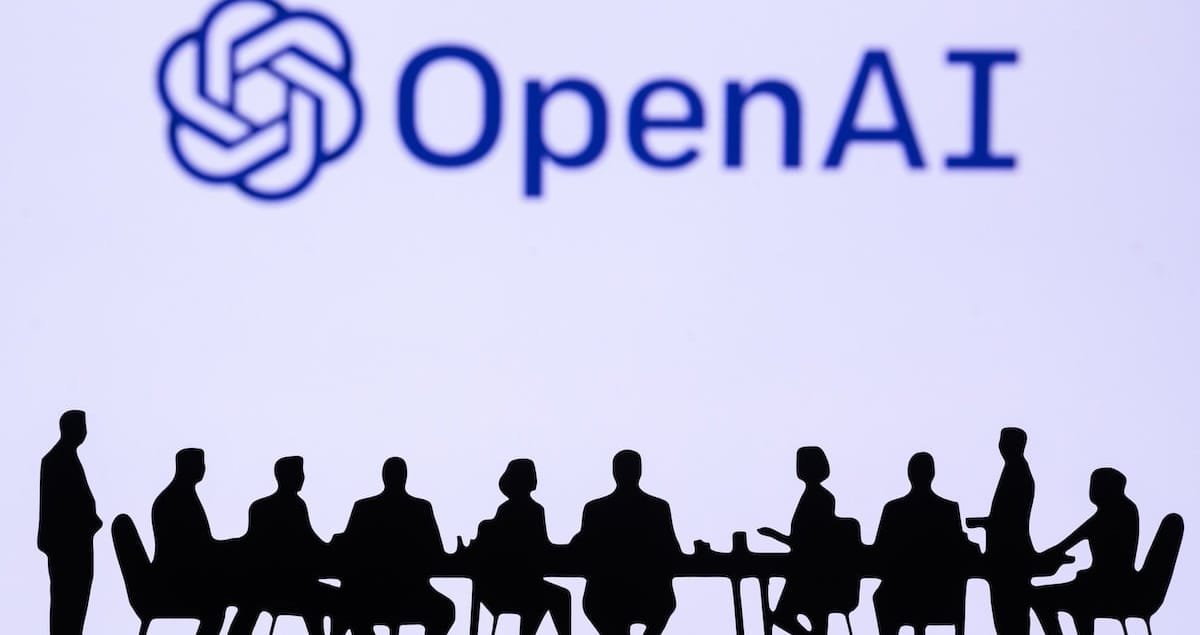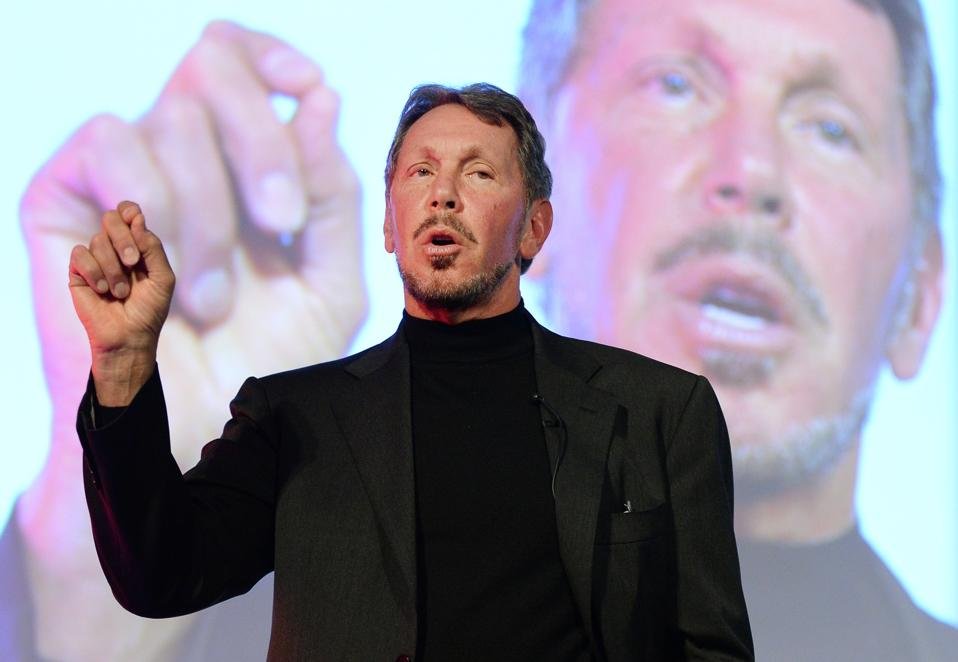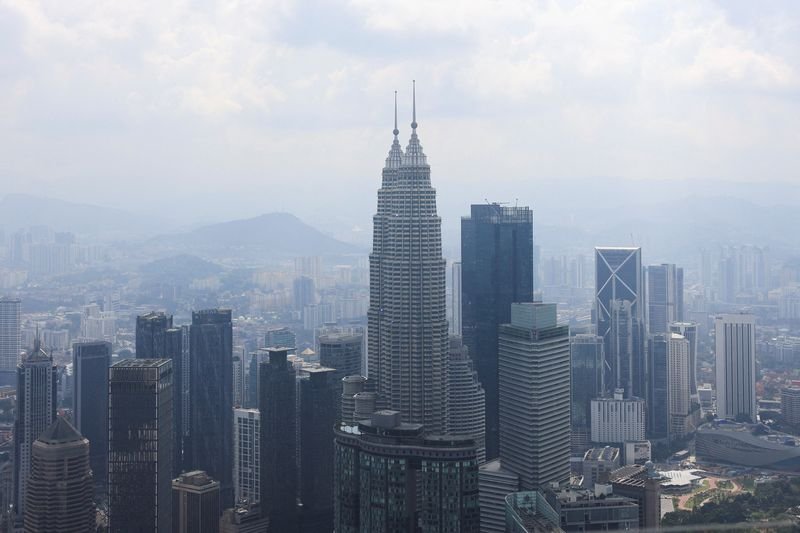Tools & Platforms
OpenAI Upgrades Its Gen AI Tech With GPT-5 Release

OpenAI has advanced its popular generative AI solution with the release of GPT-5, its fastest and most intelligent model to date, the company announced on Thursday. The publicly available model in ChatGPT excels beyond its predecessor in complex subjects like math, science, finance and law, as well as in its coding and writing capabilities.
The launch of this new model comes after two years of painstaking development for OpenAI, as cost concerns and technical roadblocks delayed its release, according to The Wall Street Journal. However, it does follow a year of intense revenue growth for the company, which is reported to have achieved $12 billion in ARR. On top of this, OpenAI has seen consistent investor backing, having most recently raked in an additional $8.3 billion at a $300 billion valuation.
GPT-5 offers developers an agentic tool for producing high-quality code and generating front-end user interfaces with significantly less prompting, OpenAI reports. The model has also improved upon personality, steerability and executing long chains of tool calls. The model is available to developers in three differently priced tiers: GPT-5, GPT-5 mini and GPT-5 nano.
ChatGPT Team now equips OpenAI’s business customers with enhanced tools for writing, research, analysis, coding and problem-solving, as well as improved reasoning on complex tasks. The business offering can better grasp an organization’s specific context, generating higher-quality responses based on files and connected apps. GPT-5 will be available through ChatGPT Enterprise and Edu on Aug. 14.
Related Reading
Tools & Platforms
Larry Ellison Tops Billionaire List In AI Race: 8 Fun Facts

Larry Ellison, CEO of Oracle Corporation (TORU YAMANAKA/AFP via Getty Images)
AFP via Getty Images
With data center spending hitting record highs amid the AI boom, it’s no wonder Larry Ellison, cofounder, chair and chief technology officer of cloud giant Oracle, is now rivaling Elon Musk for the title of World’s Richest Man.
The company reported a 359% jump in order backlog during its first quarter 2026 earnings call, sending its stock soaring 36% for the day. This landed Ellison, who owns more than 40% of shares, at the top of the Forbes Billionaires List, second only to his good friend, Elon Musk.
For perspective, the net worth of the seven wealthiest people in the world–all AI luminaries including Meta’s Mark Zuckerberg, Amazon’s Jeff Bezos, Google’s Larry Page and Sergey Brin and Nvidia’s Jensen Huang–exceeds $2 trillion, close to the GDP of Canada.
Ellison, now 81, has been a billionaire since he was 47, but there are a number of surprising things about him that make his rags to riches story iconically American.
1. Born into poverty
Ellison’s birth mom was an unwed teenager in New York City during World War II who had to give him up for adoption. His maternal aunt and uncle raised him in a poor neighborhood on the south side of Chicago.
His father, a hard-working Russian immigrant and patriotic US bomber pilot, taught him to respect authority. But as the 1960s took hold, he dropped out of college to forge his own path and follow his passion for computer programming.
2. From CIA to Billionaire
He moved to Berkeley to code for a number of tech companies, and landed a job at Ampex where he was put on a team to build a database called “Oracle” for the CIA.
Inspired by the IBM research paper titled, “A Relational Model of Data for Large Shared Data Banks,” he and his colleagues left to form a startup to beat IBM to market in commercializing relational databases. They bootstrapped the company with $2,000 of their own money and landed a $50,000 contract from the CIA that seeded their startup. A few years later they renamed the company Oracle with backing by Sequoia Capital. They went public in 1986, a day before Microsoft, and in 1990 Ellison became a billionaire.
3. Fun with Steve Jobs
Both as Silicon Valley tech titans and Woodside neighbors, Ellison and Steve Jobs were good friends. Ellison has spoken extensively about their close relationship, recalling how Jobs made him watch 73 different versions of Toy Story, the first full length feature of Pixar, the animation studio which Jobs bought from George Lucas for $10 million after being fired from Apple, and later sold to Disney for $7.4 billion in an all-stock transaction becoming the Mickey Mouse’s largest shareholder.
Ellison even offered to buy Apple to help Jobs return after his ousting, but Job declined and decided to persuade the board to take him back after he sold them his NeXT operating system. In 1997, Jobs was reinstated as CEO and Ellison joined Apple’s board.
4. Betting on AI
Following Jobs death from pancreatic cancer in 2011, Ellison doubled down on research establishing the Ellison Institute of Technology at USC with a $200 million gift in 2016 for cancer treatment. More recently, he led the Series B round for Imagene AI which calls itself the OpenAI for precision oncology.
Although his main AI investment has always been Oracle, doubling his ownership over time, Ellison has made other notable tech bets. In 1999, he seeded Salesforce and in 2018 invested in Tesla and took a board seat, later backing Musk to buy Twitter. He was also an early investor in the now-defunct home testing startup Theranos.
5. Buying Hawaii
In 2012, Ellison bought 98% of the island of Lanai from David Murdock, the CEO of Dole Food Company and owner of real estate holding company, Castle & Cooke. According to Bloomberg, he paid $300 million for the land which included Four Seasons Lanai, where he and Jobs had frequently vacationed together.
The resort now operates Ellison’s Sensei wellness retreat where AI is used to provide personalized plans, deliver insights, and customize treatments like thermal body mapping massage.
6. Buying Hollywood
In recent years, Ellison has been on a tear acquiring Hollywood studios. He just bought Paramount Global for $8.4 billion as co-owner of his son’s Skydance Media, and has been reported to be preparing a bid for Warner Brothers Discovery, which now has a market cap of $40 billion.
Ellison’s son David is best known for producing movies in the Top Gun, Mission Impossible and Star Trek franchises, including Top Gun: Maverick one of the highest grossing films of all time, with a box office gross of $1.5 billion. His daughter Megan is also an accomplished filmmaker with Annapurna Pictures which produced the Oscar-winning AI movie, Her, along with other arthouse films including Phantom Thread, American Hustle and Vice.
Ellison and Musk had billionaire cameos in Iron Man 2.
7. Pledges to give it all away
A good friend of philanthropist Michael Milken who has raised billions of dollars for cancer research, Ellison believes the road to bliss is altruistic giving. In 2010, he signed the Giving Pledge, a campaign started by Bill and Melinda Gates and Warren Buffet to encourage billionaires to donate at least half their fortune during their lifetime. Ellison pledged to give away 95% of his wealth to advance scientific research and solve complex problems related to health and aging.
Other billionaires who signed the pledge include Mark Zuckerberg, Priscilla Chan, Mackenzie Scott, Michael Bloomberg, George Lucas and Ted Turner.
8. Immortality
Ellison looks as good now as he did decades ago when he first became a billionaire. A tea-totaler pescatarian who works out daily, doesn’t drink alcohol or do drugs, and prioritizes sleep. He’s kept his mind sharp by leaning into his interests: sailing, tennis, flying, Japanese culture, tournament chess, guitar, and by being in a relationship, even if it’s taken a half dozen marriages to accomplish this.
He says high achievers are driven more by fear of failure than the pursuit of success. When he was little, his greatest fear was losing his adopted mom, and he prayed and made all sorts of deals to make sure she’d return to him safely after she was late coming home from work one night. When he lost her in college to a long battle with cancer, he fell into a deep depression and dropped out. He later found that the intelligent pursuit of happiness lies in giving with intention and has been donating his fortune to solve for longevity ever since.
Hopefully with AI he’ll succeed and that will become his greatest legacy.
Tools & Platforms
Analysis-Malaysia reins in data centre growth, complicating China’s AI chip access

By Eduardo Baptista, Ashley Tang and Jun Yuan Yong
BEIJING/KUALA LUMPUR/SINGAPORE (Reuters) -Malaysia, a hotspot for data centres, is reining in the pace of expansion in a move industry insiders and analysts expect will hinder China’s efforts to gain access to powerful chips that are crucial to improving its artificial intelligence capabilities.
The Southeast Asian country has drawn in data centre investments from U.S. technology giants like Microsoft, Amazon, Alphabet’s Google and their Chinese counterparts Tencent, Huawei and Alibaba in recent years, spurred by cheap land and electricity costs and robust local AI demand prospects.
More than two-thirds of data centre capacity under construction in Southeast Asia’s five main growth markets has been committed in Malaysia, according to data centre consultancy DC Byte. Spillover from more expensive Singapore has driven companies to commit to more data centres in the neighbouring Malaysian state of Johor.
But the data centre boom has begun to slow as Malaysia grapples with power grid capacity and water resource constraints and pressure from Washington to not allow Chinese firms to use the region as a backdoor to access U.S.-made AI chips that are under export controls.
Malaysia, China’s largest trading partner in Southeast Asia, announced in July it was requiring permits for all exports, trans-shipments and transits of U.S.-made high-performance chips, such as those made by Nvidia.
Chinese-made replacements for the U.S. chips are still subpar alternatives for the sustainment and development of cutting-edge Chinese AI models and applications that can compete with their U.S. rivals.
The new restrictions leave regulatory wriggle room for Chinese data centres to import U.S. chips for in-country use.
However, scrutiny on these projects is bound to increase, experts say, as Malaysia tries to finalise a trade deal with the United States.
The U.S. Commerce Department has raised concerns that data centres outside China could purchase AI chips to train AI models in China, including to support military uses, said Collmann Griffin, a lawyer at Miller & Chevalier who previously served as a U.S. government sanctions policy adviser.
The U.S. Commerce Department did not respond to a request for comment.
‘AI BELT AND ROAD’
The overseas push by China began soon after it released a three-year action plan for Chinese data centre operators in 2021, calling on the firms to expand abroad, especially in countries signed onto Xi Jinping’s flagship overseas development Belt and Road Initiative, of which Malaysia is a signatory.
At the end of Xi’s visit to Malaysia in April, the countries released a joint statement that pledged growing cooperation on “data linkages”, 5G infrastructure and AI, pointing to the growing political momentum underlying China’s data centre capacity expansion in Malaysia.
GDS Holdings, one of China’s largest data centre operators, two years ago began operating a hyperscale data centre campus in Johor, a massive project that is still being expanded.
But as the U.S. continues to target China’s AI capabilities, GDS has gradually reduced its stake in the Singapore-headquartered subsidiary that managed its overseas data centres and spun it off into an independent entity called DayOne in January.
Lee Ting Han, Johor state’s data centre development coordination vice chair, said Chinese firms’ “rebranding” is likely to be aimed at diversifying their client base “because they know very well what’s happening, the trade tension is moving.”
At the groundbreaking of DayOne’s first data centre in Singapore in July, CEO Jamie Khoo said that the company always intended to split its business from its Chinese parent as both companies operate under different regulatory regimes.
Singapore had a three-year moratorium of new data centre builds until January 2022 due to power and water constraints, before announcing last year that it would unlock just 300 megawatts (MW) of data centre capacity “in the near term”.
As of December 2024, Johor had 12 operational data centres with a combined estimated capacity of 369.9 MW and an additional 28 were planned for future development, representing an estimated capacity of 898.7 MW, according to a Knight Frank report.
Johor has emerged as Malaysia’s leading data centre investment hub with 42 projects worth 164.45 billion ringgit ($39.08 billion) approved as of the second quarter of 2025 contributing 78.6% of the country’s operational IT capacity, the state’s chief minister said last month.
Its proximity to Singapore means Johor benefits from lower-latency connections to the city-state’s other data centres.
But Johor has begun to step on the brakes, introducing a vetting committee last year for data centre projects that rejected about 30% of applications as of late 2024 for failing to demonstrate sustainable practices for water and energy usage, Lee said.
The approval rate has gone up as applicants become more familiar with the process, he added.
Vivian Wong, a senior analyst at DC Byte, said Southeast Asian countries like Malaysia were attractive markets for Chinese data centre expansions due to geographic proximity, relatively lower political friction and growing digital infrastructure demand.
“However, as Southeast Asia faces increased scrutiny and tariffs, this may potentially reap lesser success when compared to earlier years, especially in markets known to host Chinese-backed operations that are also targeted by the Trump administration,” she said.
($1 = 4.2080 ringgit)
(Reporting by Eduardo Baptista in Beijing, Ashley Tang and Danial Azhar in Kuala Lumpur, Jun Yuan Yong in Singapore; Editing by Miyoung Kim and Jamie Freed)
Tools & Platforms
Ribbon Launches Acumen AI Platform with Automation and AIOps Solutions

Ribbon Communications, a global leader in real-time communications technology and IP optical networking solutions, announced the launch of Acumen, a powerful new AIOps and automation platform designed to help service providers and enterprises navigate the complexities of today’s challenging operational environment and accelerate their transition to autonomous networks.
Ribbon is dedicated to helping service providers, enterprises and critical infrastructure operators worldwide modernize and secure their networks and services.
Acumen empowers organizations to solve real-life operational and strategic challenges, reducing operational costs and enhancing the customer experience. It includes out-of-the-box applications built on Ribbon’s Analytics and Muse, platforms for troubleshooting, KPI dashboards, data enrichment, and more.
Acumen Builder enables the creation of custom apps tailored to the needs of telecom and critical infrastructure. It introduces a low-code/no-code workflow builder that easily instantiates AI agents into any business process. It includes an AI services layer allowing for flexible integration of models, data stores, and related services.
With its support for both Ribbon and third-party components, Acumen provides a unified view of network performance, enabling proactive, data-driven decision-making. Its automation solutions, spanning deployment, AI Ops and security, enable enhanced operational resilience across the entire network, marking a significant step forward in the evolution of autonomous networks.
Luciano Ramos, Chief Technology and Product Officer at Optimum
Optimum shares Ribbon’s vision for building AIOps solutions that can dramatically transform the way networks are managed and maintained. By being among the first providers to integrate the Acumen platform into our operations, we’re not only enhancing network reliability and performance today, but also setting the foundation for a new standard of predictive, AI-driven innovation for us. We believe this will consistently deliver stronger connections and exceptional experiences by leveraging responsible AI to build self-healing, future-ready networks.
Sam Bucci, COO and EVP at Ribbon
Network operators are under constant pressure to reduce costs while boosting agility, and automation and AIOps are essential to meeting those demands. Acumen empowers operators with end-to-end observability, AI-driven insights, and customizable automation throughout the network lifecycle. Our DevOps teams harness Acumen’s ready-made apps, low-code/no-code innovation engine, and AI capabilities to accelerate transformation and drive efficiency.
Roy Chua, Founder and Industry Analyst at AvidThink
Acumen’s AIOps and automation are a compelling extension to Ribbon’s portfolio. Acumen draws on the company’s experience in delivering proven solutions across Layers 0/1 to 7, leveraging cloud-native software architecture and sophisticated analytics. With their track record across Tier 1 providers and other mission-critical networks, Ribbon is well-positioned to distinguish itself in a new generation of AI-powered platforms.
-

 Business2 weeks ago
Business2 weeks agoThe Guardian view on Trump and the Fed: independence is no substitute for accountability | Editorial
-
Tools & Platforms1 month ago
Building Trust in Military AI Starts with Opening the Black Box – War on the Rocks
-

 Ethics & Policy2 months ago
Ethics & Policy2 months agoSDAIA Supports Saudi Arabia’s Leadership in Shaping Global AI Ethics, Policy, and Research – وكالة الأنباء السعودية
-

 Events & Conferences4 months ago
Events & Conferences4 months agoJourney to 1000 models: Scaling Instagram’s recommendation system
-

 Jobs & Careers2 months ago
Jobs & Careers2 months agoMumbai-based Perplexity Alternative Has 60k+ Users Without Funding
-

 Podcasts & Talks2 months ago
Podcasts & Talks2 months agoHappy 4th of July! 🎆 Made with Veo 3 in Gemini
-

 Education2 months ago
Education2 months agoMacron says UK and France have duty to tackle illegal migration ‘with humanity, solidarity and firmness’ – UK politics live | Politics
-

 Education2 months ago
Education2 months agoVEX Robotics launches AI-powered classroom robotics system
-

 Funding & Business2 months ago
Funding & Business2 months agoKayak and Expedia race to build AI travel agents that turn social posts into itineraries
-

 Podcasts & Talks2 months ago
Podcasts & Talks2 months agoOpenAI 🤝 @teamganassi

